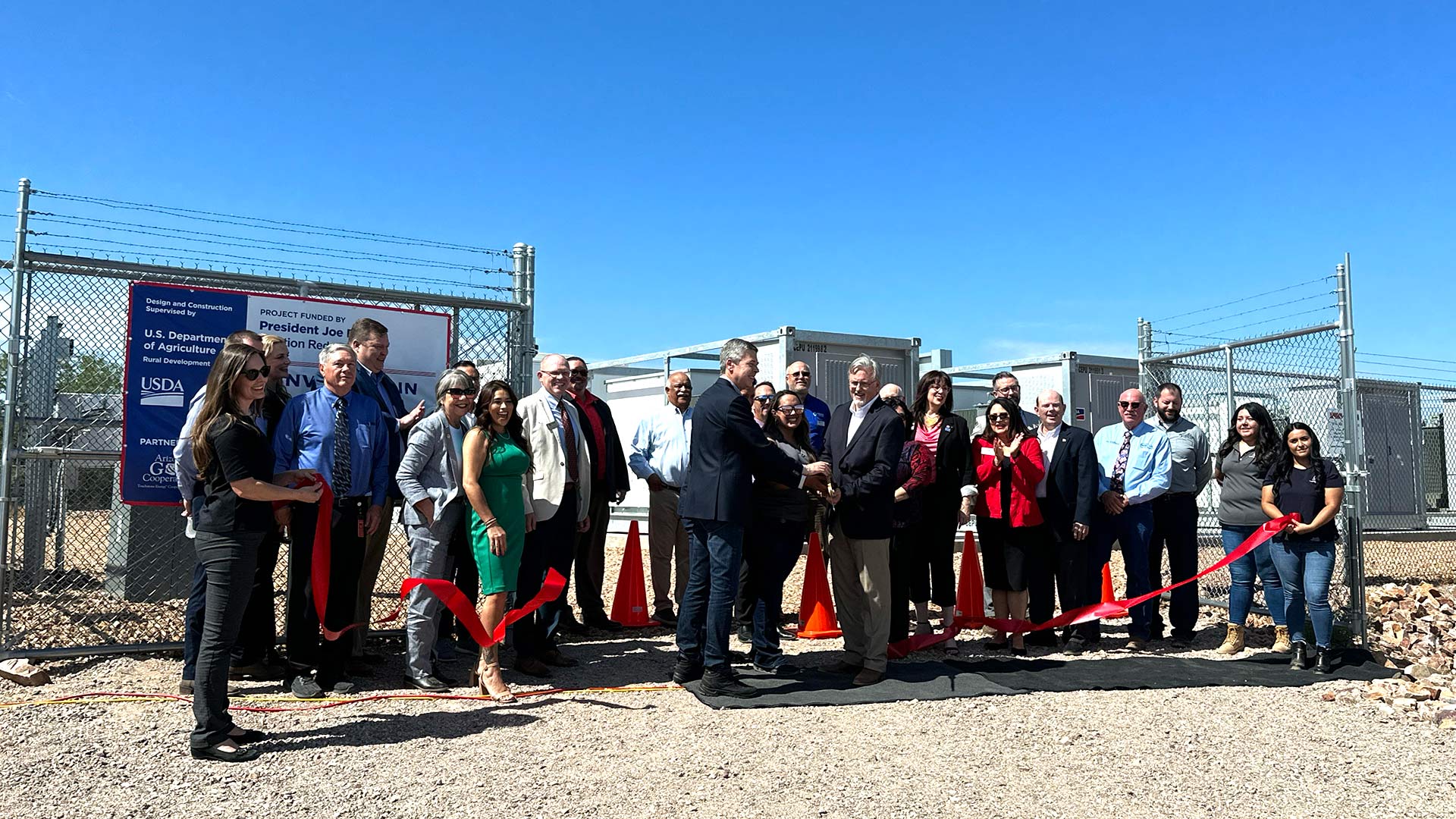 U.S. Department of Agriculture’s Rural Development administrator Andy Berke and Patrick Ledger, Arizona Generation and Transmission Cooperatives’ CEO, cut the ribbon to a new battery energy storage system in Sahuarita, AZ on Tuesday, July 2, 2024.
U.S. Department of Agriculture’s Rural Development administrator Andy Berke and Patrick Ledger, Arizona Generation and Transmission Cooperatives’ CEO, cut the ribbon to a new battery energy storage system in Sahuarita, AZ on Tuesday, July 2, 2024.
$55.2 million is headed to Sierra Southwest Cooperative Services Inc. to finance three new battery energy storage systems. The funding will bring clean energy to rural Arizonans in cities like Sahuarita, lowering energy bills and creating more jobs for farmers, ranchers, and producers.
“Our community stands at the forefront of a new energy management system,” Sahuarita Mayor Tom Murphy said. ”As we move forward to continue to embrace our innovative and support sustainable initiatives and work towards a more prosperous future, this project is just the beginning of that, and with your continued support, we'll continue to achieve great milestones and set a powerful example for other communities to follow.”
U.S. Department of Agriculture’s Rural Development administrator Andy Berke says this is a step in the right direction towards making the transition to clean energy accessible.
“How do we ensure that things are affordable for the members of these co-ops and build equity throughout rural America?” Burke said. “In this context, equity means people have a financial interest that is growing, just like equity in your house.”
The money comes from the Powering Affordable Clean Energy Program meant to provide clean, affordable, and reliable energy accessible to the rural Americans. The new energy systems will total 35 megawatts and last four hours in duration.
“This $55.2 million federal investment for rural green energy will promote economic growth, job creation, and sustainability across Pima, Santa Cruz, Graham, Cochise, Greenlee, and Mohave Counties,” USDA Rural Development State Director Charlene Fernandez said in a press release. “Rural Development is empowering rural communities to take charge of their energy future and contribute to President Biden’s national goal of reducing carbon emissions and combating climate change.”
As the department is working to find clean energy solutions that fit each landscape, Berke says solar makes the most sense in Arizona.
“During the day, solar array collects energy. But then it sends it to these batteries at night, it gets stored up and then released back into the system. That means that you don't have to buy or generate that energy elsewhere. It saves people money.”
The three facilities are located in Sahuarita, Mohave as well as Cochise. These new developments are a part of Arizona Electric Power Cooperative’s Reliable Energy plan.
“This is really, from our perspective, the first step in a longer term plan to implement smart, affordable and reliable clean energy initiatives for our rural cooperatives and the Public Power folks in Arizona,” Patrick Ledger, Arizona Generation and Transmission Cooperatives’ CEO, said during Tuesdays ribbon cutting ceremony.

By submitting your comments, you hereby give AZPM the right to post your comments and potentially use them in any other form of media operated by this institution.